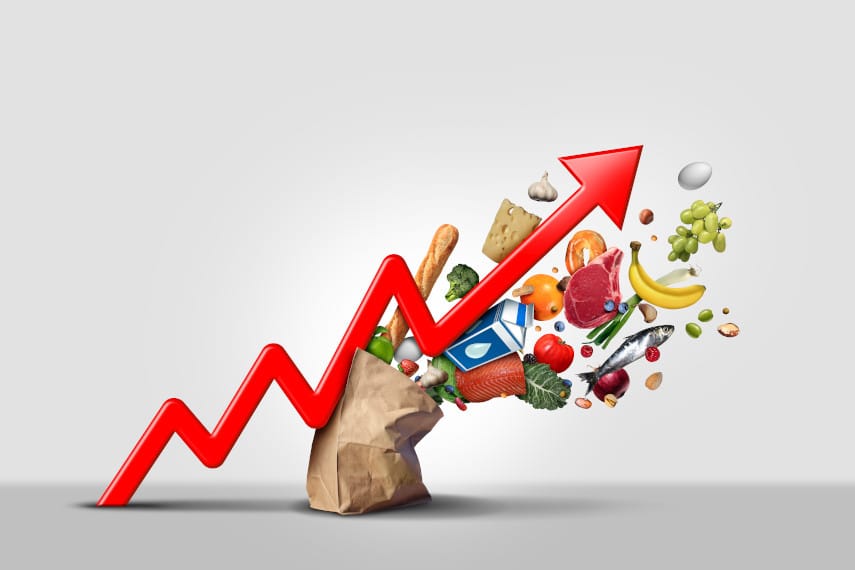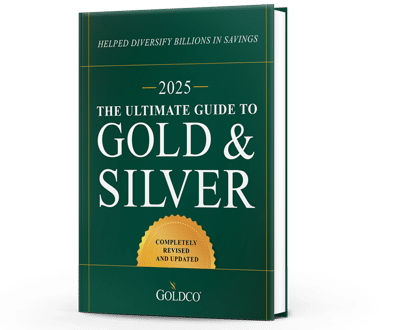6 Indicators of a Potential Recession
It seems that in the media today there are more and more mentions of the dreaded R-word: recession With growing economic uncertainty, the threat of potential recession seems to be growing as...
Economy

Last month’s inflation numbers were a bit of a respite for the Biden administration, but hardly a relief. While month-on-month inflation dropped to 0.3% and year-on-year inflation dropped to 8.3%, we may not be out of the woods yet.
In fact, the 8.3% print was yet another miss for Wall Street analysts, who had predicted an 8.1% inflation rate. This follows on the major GDP miss, with Wall Street expecting 1% growth in the first quarter rather than the 1.4% contraction that actually took place.
We all know that one month doesn’t make a pattern, so any relief about inflation lowering should be taken with a grain of salt. It’s hardly likely that inflation has peaked yet, particularly as we’re still seeing the effects of money creation throughout the economy and the Federal Reserve has yet to begin its quantitative tightening policy.
As unbelievable as it may sound, there are some people actually predicting that inflation will fall back to 2% by 2024. How exactly they expect that to happen is unclear, as you can’t pump trillions of dollars into the economy unchecked without having some sort of massive price increases.
So if you thought inflation could be over and done with soon, think again. Here are four reasons inflation is here to stay and could even get worse.
The thing about monetary policy is that it’s a very coarse tool that’s used to try to fine-tune the economy. Because decisions about the course of monetary policy are made after analysis of data, and these data take a long time to collect and process, monetary policy will always be reactionary rather than proactive.
Just remember that the Fed first pumped in about $3 trillion into the economy over the course of a few months, from about March to June of 2020. It then proceeded to pump another $2 trillion into the economy between June 2020 and today.
What we’re seeing in terms of inflation today is very likely the impact of that initial first bout of money creation that happened two years ago. It took over a year before that money first showed up in official inflation statistics. So why would anyone think that inflation would be over anytime soon?
It could easily be another year or more before the effects of the Fed’s total money creation make their way through the economy, although the Fed is now trying to counteract that with quantitative tightening. But inflation that has been allowed to get out of control isn’t going to fall back to earth overnight.
Another important thing to remember is just how much money the Fed created. If we take our baseline as a Fed balance sheet of around $4 trillion, we see that the Fed has added $5 trillion to the economy with its balance sheet expansion.
Its quantitative tightening is supposed to move up to $1.1 trillion off the balance sheet each year, starting in June. So by the end of 2023 the Fed’s balance sheet might be down to around $7.4 trillion. And if the Fed continued quantitative tightening until the end of 2024, it might get down to $6.3 trillion.
That’s still a massive increase in the amount of money in the financial system from pre-2020 levels. And that money will remain in circulation.
To get a sense of just what that money is doing, you need to look at overall money supply levels. Right now M2 is the broadest measure of money that the Fed is willing to publish.
According to the latest M2 data, the M2 money supply is up about 8.6% year on year. That tracks pretty well with official inflation statistics. So if you want to get a sense of whether inflation is going to continue being a problem, take a look at M2.
Another aspect affecting consumer prices is the unknown effect of the war in Ukraine. Ukraine and Russia are both major sources of raw materials and foodstuffs such as barley, wheat, steel, nickel, aluminum, oil, and natural gas. From the seed oils in your baked goods to the energy you use to heat your home to the tin cans of food on the shelves of your grocery store, just about everything we consume will be affected by what’s happening in Ukraine.
If you thought food prices were bad now, just wait until harvest time, when no grain exports are forthcoming from Russia or Ukraine. We’re already seeing prices for cooking oils rising as the effects of the war are making their way through the world economy, and reaction on the part of other governments, such as Indonesia’s ban on the export of palm oil to keep domestic prices stable, could make the problem even worse.
Once again, we may very well have only seen the tip of the iceberg when it comes to rising food prices. And if food prices continue to rise, it will continue to push the consumer price index even higher.
The biggest wild card is the behavior of consumers. We have become so used to low inflation that we don’t know how to protect ourselves against high and rising inflation. So many people were in denial for so long that anything was wrong that they failed to protect themselves and their assets against inflation.
But if inflation becomes longstanding and entrenched, consumers and investors will have to learn to modify their behavior. We’re already seeing some signs of that.
More and more consumers are starting to stock up in a major way when they go to the store, filling their shopping carts to build up supplies of food and toiletries and get ahead of price increases. More people are starting to buy consumer goods when they can get them, getting ahead of both price increases and potential shortages.
Normally the relationship between prices and the money supply is pretty predictable. That’s because velocity, part of the MV=PQ equation, is generally stable. But if velocity increases, it can help boost prices even higher than what we would expect just from money supply increases alone.
So far we haven’t seen major increases in velocity, but if it happens, particularly if inflation expectations grow, it could help feed into a cycle of ever higher prices.
Rising inflation means the value of your dollars is declining every day. Money sitting in the bank is guaranteed to lose money every year. At the current 8.3% rate of inflation, your money would lose half its value in only five years. That’s why the Fed’s attempts to bring down inflation are so important.
Many people don’t trust the Fed to do that, which isn’t surprising. After all, the Fed for the longest time didn’t acknowledge the existence of inflation, then said inflation was just transitory, and is only now getting serious about fighting inflation. Every day the Fed isn’t tackling inflation is another day that your wealth is declining.
That’s why more and more people are interested in protecting their wealth against inflation. And they’re doing that by turning to an old standby: gold.
Gold has been trusted for centuries to protect wealth during times of economic crisis and financial turmoil. The last time the US suffered a severe inflationary crisis, during the stagflationary 1970s, gold’s average annualized growth rate was over 30% for the decade.
Gold also made tremendous gains in the aftermath of the 2008 financial crisis, something which many investors who lost big in 2008 noticed. And that’s why many are turning now to gold, to help protect them against big losses in the event the next financial downturn ends up rivaling 2008.
If you’re worried about inflation taking a bite out of your hard-earned retirement savings, maybe it’s time to start thinking about protecting your assets with gold. The precious metals experts at Goldco have helped thousands of customers just like you benefit from owning gold over the years.
With over a decade of experience and many thousands of satisfied customers, our representatives are ready to help you get started with gold. Call Goldco today to find out more about how you can put gold to work protecting your hard-earned wealth.

